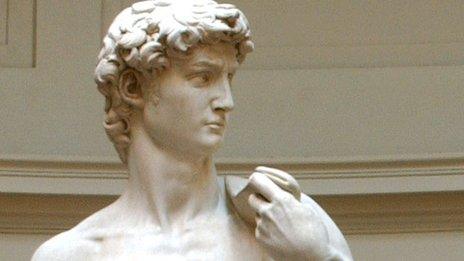Michelangelo bronzes verified thanks to eight-pack stomach clue
- Published
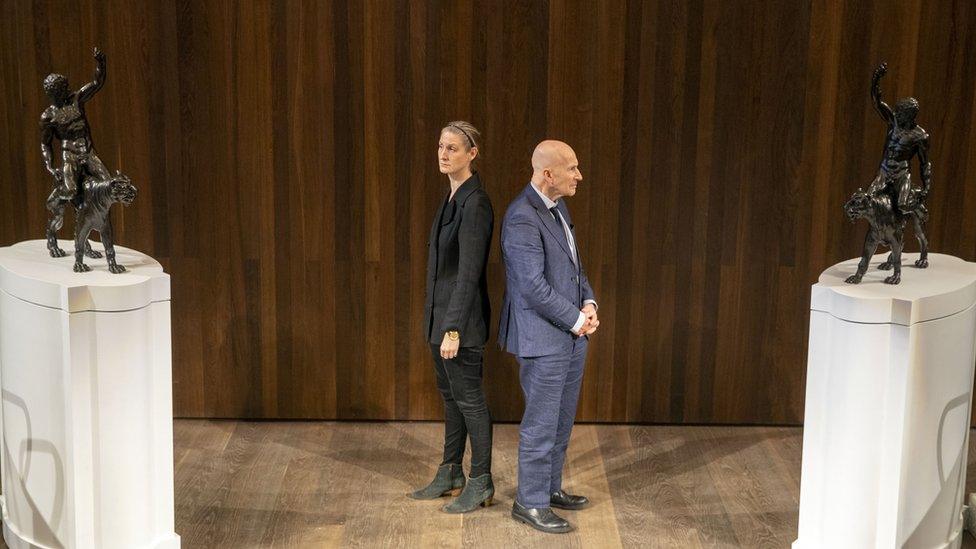
The Rothschild bronzes depict two muscular male nudes riding on panthers
"Eight-pack" stomachs carved into two sculptures led researchers to confirm the works as the only known surviving bronzes cast by Michelangelo.
A worldwide team led by the University of Cambridge confirmed the attribution after four years of research.
The 1m-high (3.2ft) works depict two muscular male nudes riding on panthers.
In 2002 they were sold by Sotheby's for £1,821,650, but if the Michelangelo evidence is accepted they could be worth hundreds of millions.
Last year, Leonardo da Vinci's Salvatore Mundi sold for $450m (£350m) and confirmed works by Michelangelo would have valuers dreaming of such huge numbers.
'Extra muscle'
The sculptures, known as the Rothschild bronzes, are believed to have been created after Michelangelo's marble masterpiece David, and before he began painting the elaborate Sistine Chapel ceiling fresco between 1508 and 1512.
Dr Victoria Avery, Keeper of Applied Arts at the Fitzwilliam Museum, said Michelangelo created works with anatomical features which were specific to him.
These included "an extra tendinous intersection, which is in fact a band of fibrous tissue that converts a six-pack into an eight or a ten-pack".

The non-matching pair share details known to be specific to Michelangelo's works
In the 19th Century the bronzes were thought to be by the Renaissance master, but that theory was later dismissed and they were attributed to the Dutch sculptor Willem Danielsz van Tetrode.
By 2014, Paul Joannides from the University of Cambridge had linked them to a tiny detail, external in a 16th Century copy of lost sketches by Michelangelo held in the Musee Fabre in Montpellier, France.
The Fitzwilliam Museum presented a case for the reattribution in February 2015 based on historical, technical and anatomical evidence.
Dr Avery also studied 30 letters written by the artist to his family at the time he was crafting a colossal bronze statue of Pope Julius II in Bologna.
He wrote of the "trials and tribulations of an artist learning on the job", she said, and creating the smaller bronzes would have provided "light relief".
The letters showed the artist was involved in all stages of the production of his bronzes, not only making the original models but also preparing moulds and undertaking the finishing work, according to researchers.
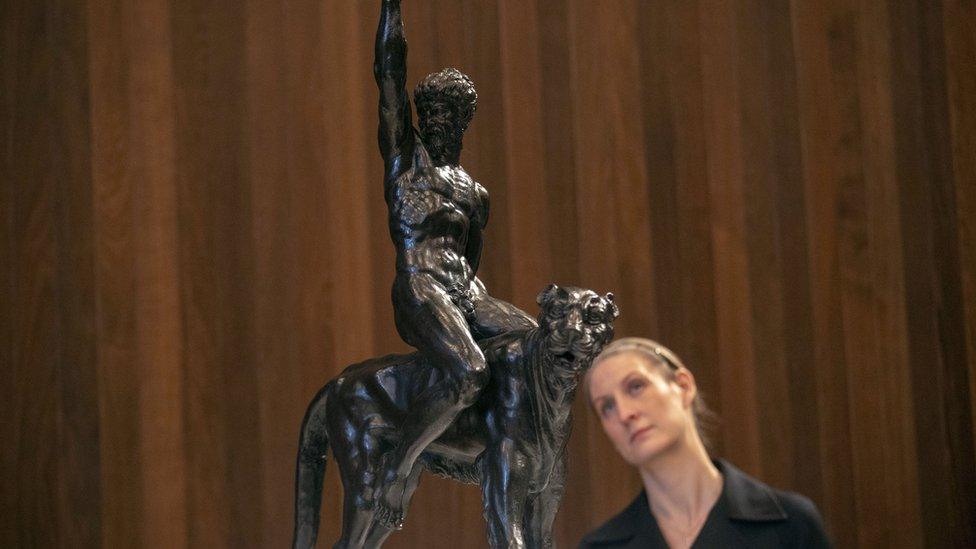
The attribution of the bronzes would see their value far eclipse the £1.8m sale price last time they were auctioned
Scientists in Switzerland used neutron analysis to date the pieces to Michelangelo's era, while Prof Peter Abrahams, a clinical anatomist at Warwick University, found they bore a number of the artist's anatomical quirks including toe-spacing, the eight-pack and bulging thigh and calf muscles.

You may also be interested in:

Dr Avery said: "We know the public can be cynical when you have no documentary evidence, but were more likely to believe the science.
"They are authentic Michelangelo, made when he was at the height of his creative genius, when he was desperate to outdo his contemporaries and dominate every medium on a massive scale."
No paperwork exists on the sculptures before 1878 when they were bought by the Rothschild dynasty from a Venetian noble family for between 250,000 and 300,000 gold francs.
They are now with private owners in London but are expected to be loaned around the world.

Michelangelo is believed to have cast the bronze figures after he created David in marble...

... and before he painted the Sistine Chapel ceiling
Michelangelo's other known bronzes - including the papal statue - were melted down to create cannons and weapons during the French Revolution, Dr Avery said.
"Until now this significant part of his career has been neglected," she added.
"We know he was great but these four years of work have proved he pushed boundaries, he got his hands dirty.
"Where artists shied away from this alchemical material, he embraced it like no-one else of his generation.
"They add lustre to someone we already know was a supreme creative genius."
The research is the subject of a new book, Michelangelo: Sculpture in Bronze, which charts his relatively undocumented career as a sculptor.
- Published3 February 2015
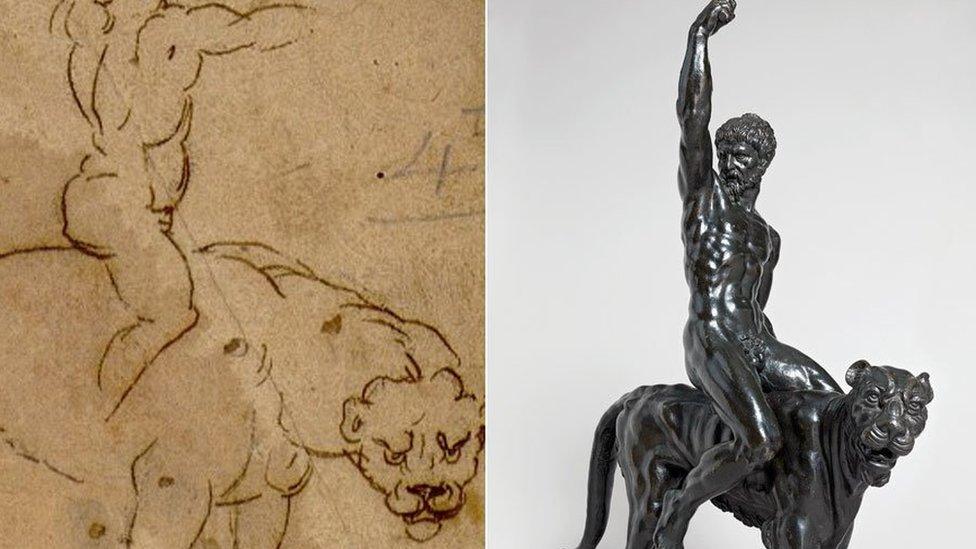
- Published2 February 2015
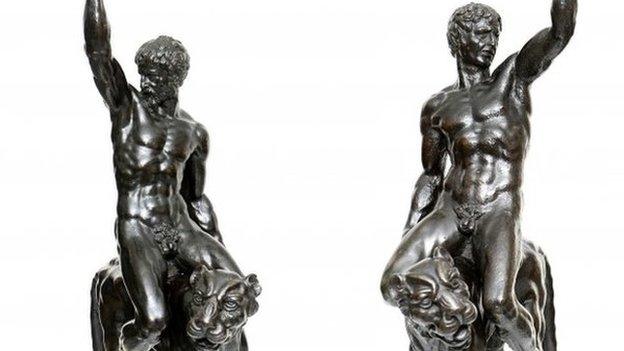
- Published11 July 2011
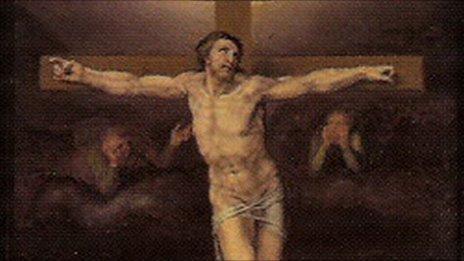
- Published1 May 2014
